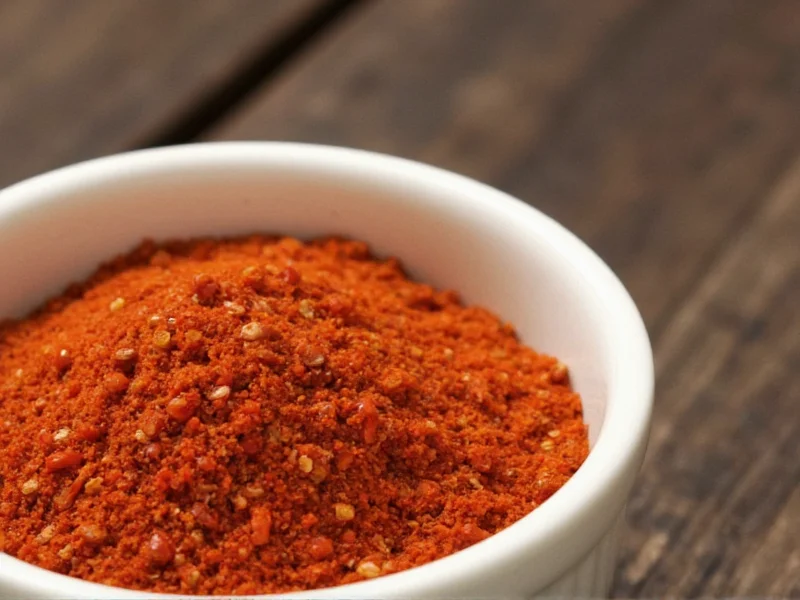The perfect homemade chilli seasoning recipe combines 2 tablespoons chili powder, 1 tablespoon cumin, 2 teaspoons garlic powder, 2 teaspoons onion powder, 1½ teaspoons paprika, 1 teaspoon oregano, ½ teaspoon cayenne pepper (adjust to taste), and 1 teaspoon salt. Mix thoroughly and store in an airtight container. This versatile blend creates authentic restaurant-quality flavor for chilli, tacos, and more.
Mastering Your Homemade Chilli Seasoning Blend
Creating exceptional chilli seasoning from scratch transforms ordinary dishes into culinary delights. Unlike store-bought versions filled with fillers and preservatives, this authentic chilli seasoning recipe gives you complete control over flavor intensity and quality. The right blend balances heat, earthiness, and complexity while enhancing rather than overwhelming your dishes.
Essential Ingredients and Their Roles
Understanding each component's purpose helps you create the perfect chilli seasoning mix proportions. Quality ingredients make all the difference in achieving that restaurant-style chilli seasoning flavor profile:
- Chili Powder (2 tbsp) - The foundation providing earthy heat and rich red color. Choose a high-quality brand for best results.
- Ground Cumin (1 tbsp) - Adds warm, nutty depth essential to authentic chilli seasoning.
- Garlic Powder (2 tsp) - Contributes savory umami notes without raw garlic's sharpness.
- Onion Powder (2 tsp) - Complements garlic with sweet, aromatic complexity.
- Paprika (1½ tsp) - Enhances color and adds subtle sweetness.
- Dried Oregano (1 tsp) - Provides herbal notes characteristic of Southwestern cuisine.
- Cayenne Pepper (½ tsp) - Adjust for heat level; start conservatively.
- Salt (1 tsp) - Balances and amplifies all other flavors.
Step-by-Step Preparation Guide
Follow these simple steps for perfect chilli seasoning every time. This easy chilli seasoning recipe for beginners requires no special equipment:
- Gather all ingredients using proper measuring spoons for accuracy
- Combine spices in a small bowl
- Whisk thoroughly for 1-2 minutes to ensure even distribution
- Transfer to an airtight container immediately after mixing
- Label with date and ingredients
The key to exceptional homemade chilli seasoning blend is thorough mixing. Incomplete blending creates pockets of intense heat or overwhelming single flavors. For best results, whisk vigorously and consider sifting ingredients together for maximum uniformity.
Flavor Profile and Customization Options
This base recipe creates a balanced medium-heat seasoning suitable for most palates. Understanding how to adjust your chilli spice blend ensures perfect results for any dish or preference:
| Flavor Element | Adjustment | Effect |
|---|---|---|
| Heat Level | Add ¼-½ tsp cayenne or reduce to ¼ tsp | Creates mild to hot variations |
| Smokiness | Replace 1 tsp paprika with smoked paprika | Adds authentic grilled flavor |
| Earthy Depth | Increase cumin by ½ tsp | Enhances traditional Southwestern profile |
| Sweetness | Add ½ tsp cocoa powder | Creates mole-inspired complexity |
For gluten-free chilli seasoning mix, verify all spice labels as some commercial blends contain anti-caking agents with gluten. Most single-ingredient spices are naturally gluten-free, but cross-contamination can occur during processing.
Storage Recommendations for Maximum Freshness
Proper storage maintains your homemade chilli seasoning's potency and flavor. This shelf-stable chilli seasoning recipe lasts significantly longer when stored correctly:
- Use dark glass or opaque containers to protect from light
- Store in a cool, dry place away from heat sources
- Ensure containers are completely airtight
- Label with preparation date for freshness tracking
When stored properly, your chilli seasoning blend maintains peak flavor for 3-4 months. After 6 months, potency gradually diminishes though remains safe to use. For extended shelf life, store in the freezer where it will maintain quality for up to one year. Always use dry utensils when measuring to prevent moisture contamination.
Practical Usage Guidelines
Understanding how to use your chilli seasoning elevates everyday cooking. This versatile blend works across numerous applications:
- Classic Beef Chilli - Use 3-4 tablespoons per pound of meat
- Taco Meat - Add 2 tablespoons per pound during cooking
- Bean Dishes - Stir in 1-2 tablespoons while simmering
- Roasted Vegetables - Toss with 1-2 teaspoons before roasting
- Marinades - Combine with oil and citrus for meats
For best flavor development, add seasoning early in the cooking process to allow flavors to meld. When making chilli, bloom the spices in oil for 1-2 minutes before adding liquids to maximize flavor extraction. Remember that heat intensifies over time, so taste before serving and adjust seasoning as needed.
Troubleshooting Common Issues
Even simple recipes encounter challenges. Here's how to address common problems with homemade chilli seasoning:
- Too Spicy - Balance with additional cumin and a touch of sugar or honey
- Not Spicy Enough - Add cayenne in ¼ teaspoon increments
- Bitter Taste - Indicates possible stale spices; replace older ingredients
- Weak Flavor - Bloom spices in oil before use to intensify flavors
- Clumping - Add 1 teaspoon cornstarch or arrowroot to absorb moisture
For consistent results, measure spices precisely rather than estimating. Small variations significantly impact the final flavor profile. If your seasoning lacks complexity, consider upgrading to freshly ground whole spices for certain components like cumin.











 浙公网安备
33010002000092号
浙公网安备
33010002000092号 浙B2-20120091-4
浙B2-20120091-4